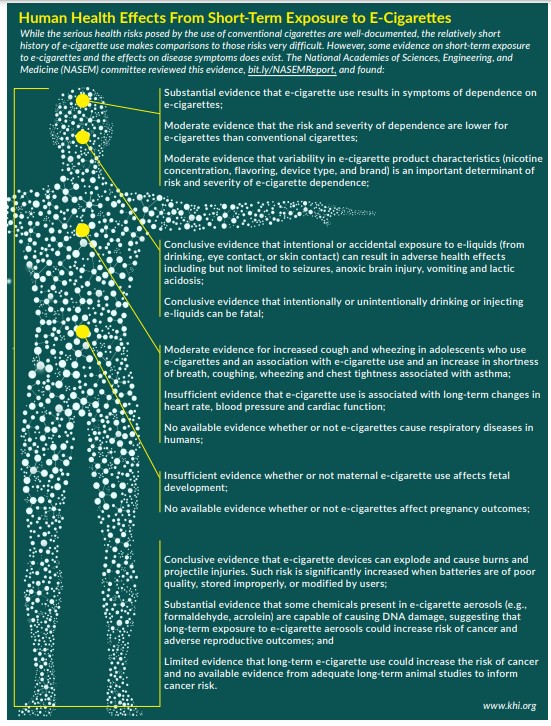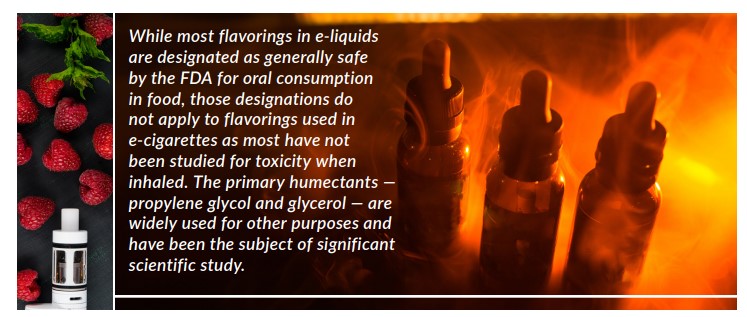Introduction
On September 12, 2018, U.S. Food and Drug Administration (FDA) Commissioner Scott Gottlieb, M.D., said the use of e-cigarettes by U.S. teenagers had reached epidemic proportions. The first of a two-part series highlighted the increased use among teens and adults as well as regulatory action at the federal and state levels. This issue brief, the second in the series, examines the latest research concerning the health effects of e-cigarettes.
E-Cigarette Basics
Electronic cigarettes, commonly known as e-cigarettes, are battery-powered devices that provide nicotine and other additives to the user in the form of an aerosol. Using an e-cigarette also is referred to as “vaping.” E-cigarettes entered the U.S. market in 2007and initially were marketed as a smoking cessation tool for adults and a “safer” alternative to conventional cigarettes. Within five years, policymakers at the federal, state and local levels began enacting laws and ordinances to ban the sale and use of e-cigarettes to minors, limit their use in public places, and impose taxes similar to those on conventional cigarettes.
The e-cigarette industry has grown in size and organizational complexity in recent years, most notably with the entry of major tobacco companies and the proliferation of vape shops. JUUL, an e-cigarette device launched in 2015 that resembles a USB drive, has become especially popular among teens and young adults as it can be used discreetly, has a high nicotine content, and comes in flavors such as mint, mango and fruit. Juul pods, as advertised, are manufactured in 5 percent (59 milligrams of nicotine per milliliter of liquid) and 3 percent (35 milligrams of nicotine per milliliter of liquid) formulations. However, it’s the presumed rate of absorption reported by JUUL that sets it apart — the company suggests the pattern of nicotine levels in the blood over time mimics that of cigarette smoking due to the use of nicotine salts in their formulation. A 2-pack of JUUL pods costs about $10. JUUL Labs holds nearly three-quarters (72.8 percent) of the e-cigarette retail market in the U.S. as of September 2018 and sold over $1.29 billion in vape kits and nicotine pods during the 12 months ending August 2018.



